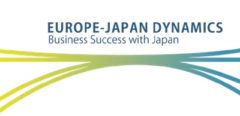Welcome to Europe-Japan Dynamics!
This is our blog page.
Please click here for what we do.
Please click here for who we are.
************************************
Pick of the week from Japan, 7 – 11 August
11 Aug. JR East to strengthen its overseas business, acquiring operation rights of a British railway company
JR East (a major railway company in Japan) announced that the company had acquired the operation rights of a railroad network of approximately 900 kilos of the central part of the U.K. owned byWest Midlands in cooperation with Abellio, a railway company of the Netherlands and Mitsui & Co., Ltd., a major Japanese trading company. JR East will be responsible for train operation management and organisation of a railroad diagram for approximately ten years from this December. It is naive that JR East participates in the operation of the railroad service abroad.
JR East has been a part of the state-owned railway company for decades., even since its privatisation and divestiture in 1987.
Now the time for a big change is arriving. Japanese specialists of railway operations will be working for a UK domestic railway company. From one domestic business to another– what a leap it is. This is a fundamental change for the staff transferred to the UK. While there are ample professional skill sets for JR East to bring and apply to operate the British company, the way of doing would be largely different between the two companies.
Exposure to other cultures is the last thing which a domestic giant, such as an ex-monopoly national railway company, would experience.
Globalization is reaching little by little but steadily to the most unexpected companies snd their people in Japan. A number of such events, large and small, will drive the Japanese population to look outside the country as their partners and neighbors.
- The news items referred here are picked up from “Asahi Digital”, and translated by Europe-Japan Dynamics. The cited titles or articles are not an official translation by the Asahi Newspaper.
************************************
- Interested in our cross-cultural trainings and consulting to move forward business with Japan? Please talk to us.




